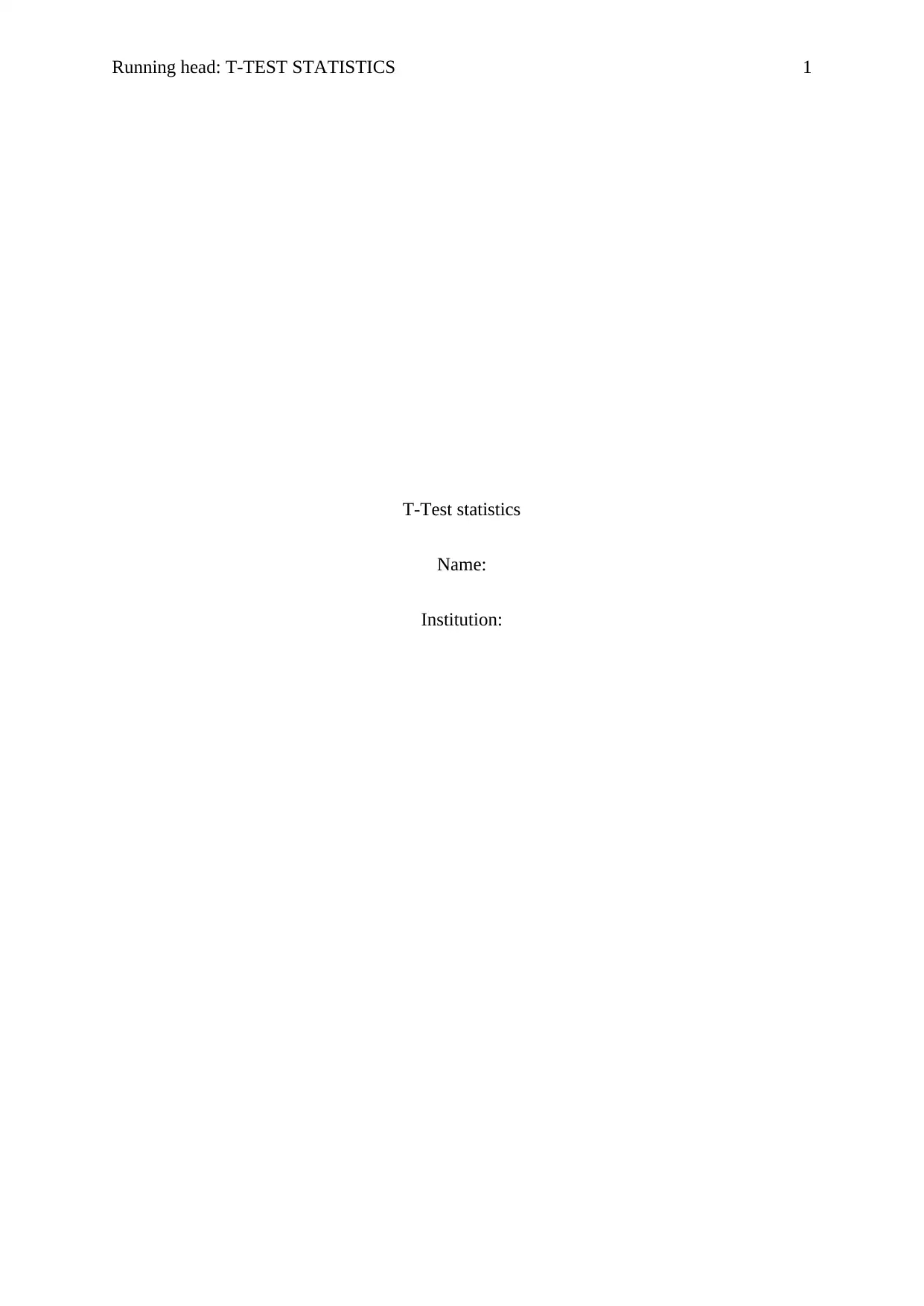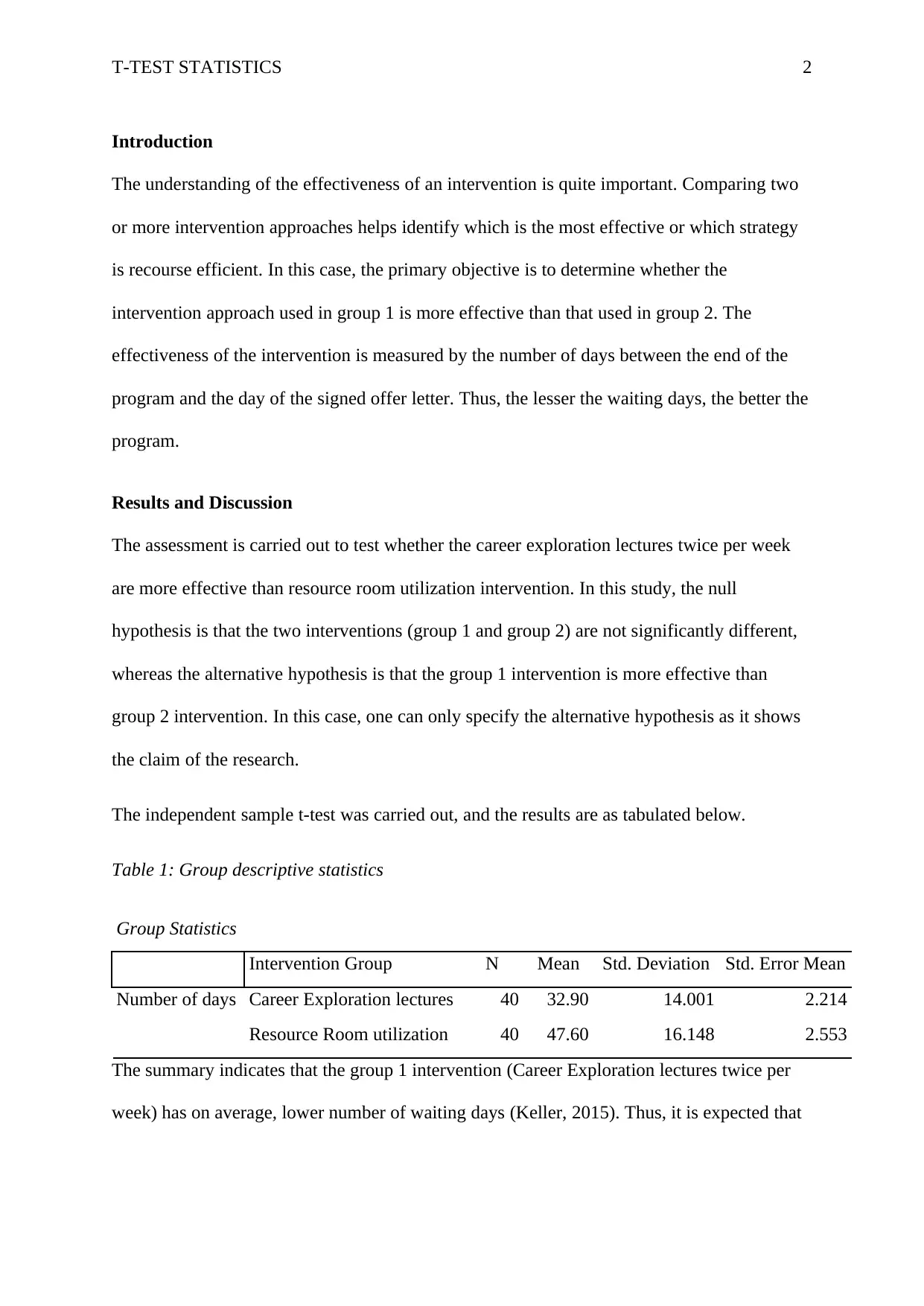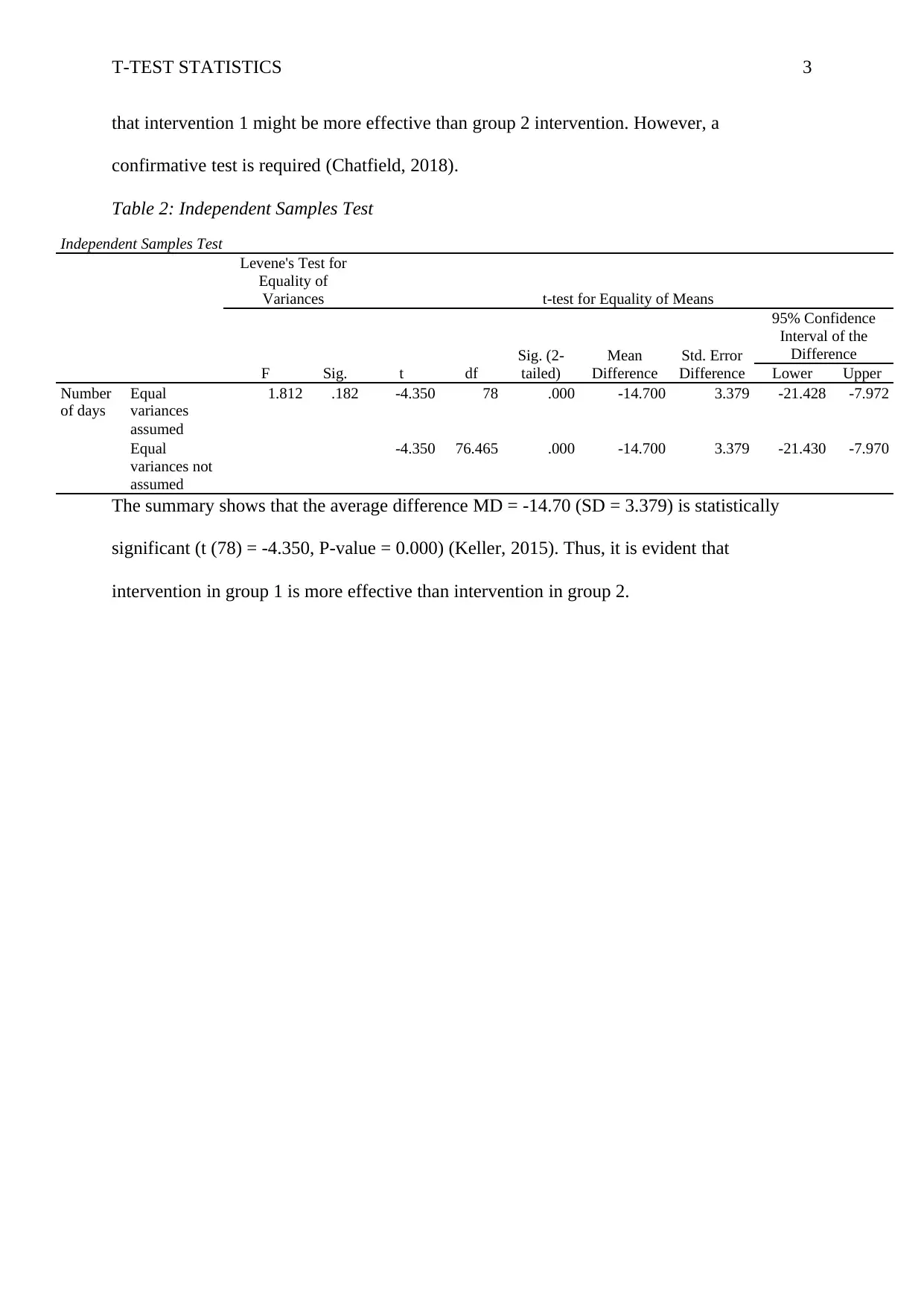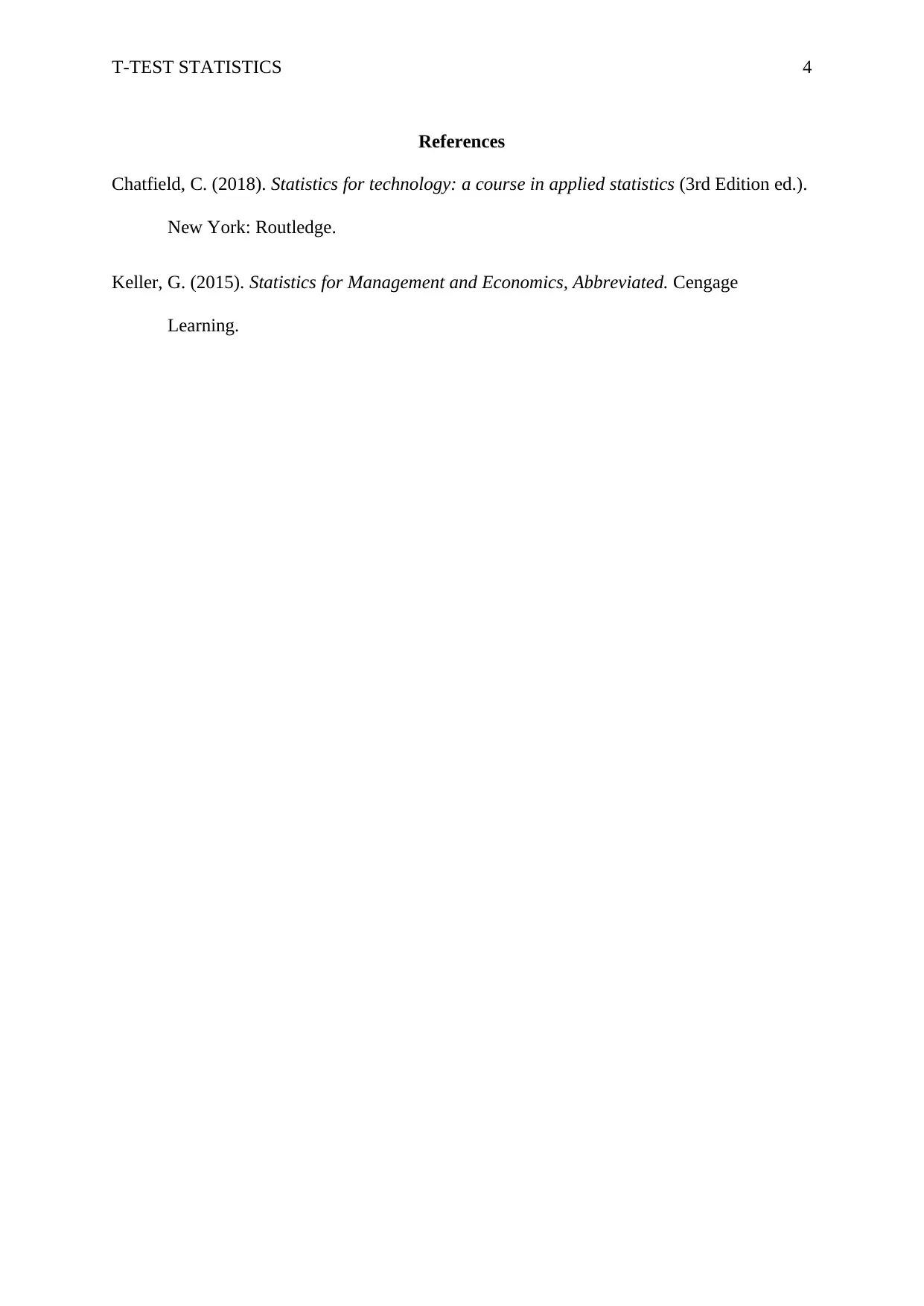Comparative Analysis of Intervention Programs Using T-Test Statistics
VerifiedAdded on 2022/09/26
|4
|492
|21
Report
AI Summary
This report presents a comparative analysis of two intervention programs using the t-test statistical method. The study aims to determine the effectiveness of career exploration lectures compared to resource room utilization by analyzing the number of waiting days. The analysis includes descriptive statistics, independent samples t-tests, and a discussion of the results. The results indicate that the career exploration lectures are more effective, with a statistically significant mean difference (MD = -14.70, p-value = 0.000). The report discusses the implications of the findings, providing insights into the effectiveness of the interventions and the application of t-test statistics in program evaluation. The report includes tables summarizing the group statistics and the independent samples t-test results, along with references to relevant statistical resources.
1 out of 4











![[object Object]](/_next/static/media/star-bottom.7253800d.svg)